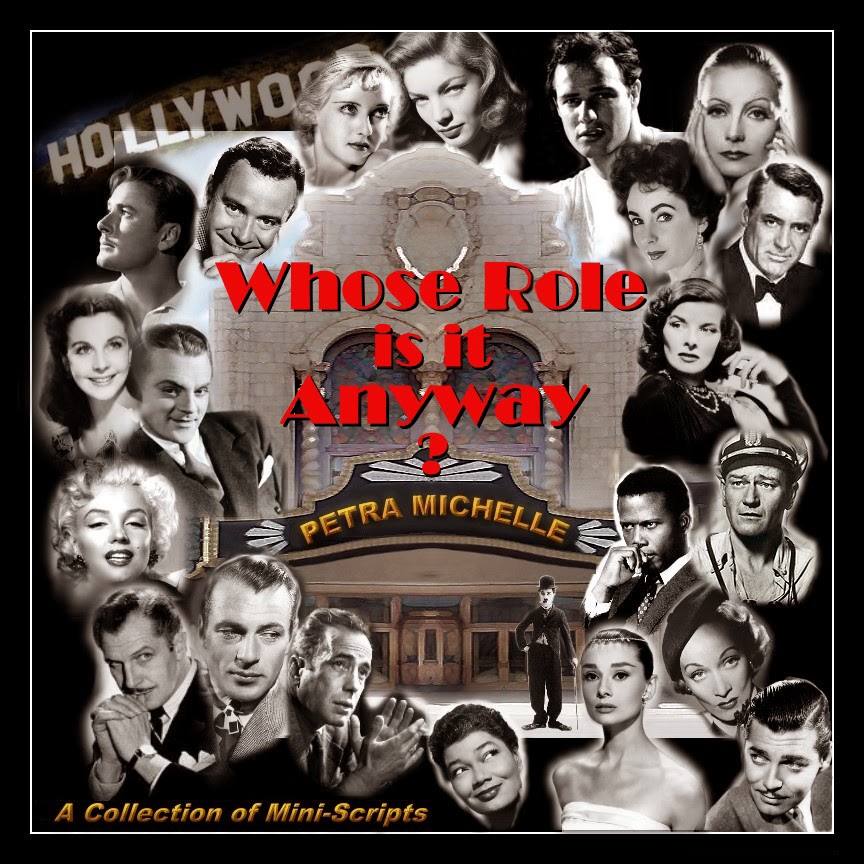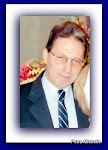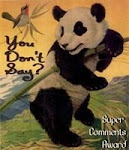SOME LIKE IT HOT sizzles at #1,
TOOTSIE, DR. STRANGELOVE, ANNIE HALL and DUCK SOUP Complete The Top Five Movies
SOME LIKE IT HOT, the 1959 classic starring Marilyn Monroe, Tony Curtis and Jack Lemmon which was written, directed and produced by Billy Wilder was ranked #1. Following SOME LIKE IT HOT in the top 10, in order, were: TOOTSIE (#2), DR. STRANGELOVE (#3), ANNIE HALL (#4), DUCK SOUP (#5), BLAZING SADDLES (#6), M*A*S*H (#7), IT HAPPENED ONE NIGHT (#8), THE GRADUATE (#9) and AIRPLANE! (#10).
Interesting facts about AFI's 100 Years...100 Laughs include: Cary Grant is the most celebrated actor with eight films in the top 100; The Marx Brothers and Woody Allen star in five; Spencer Tracy, Buster Keaton, Charlie Chaplin and Bill Murray each appear in four films. Katharine Hepburn and Margaret Dumont share the title of most represented actress in America's funniest movies, each with four films. Five Woody Allen films made the list, including the film ranked #4, ANNIE HALL, making him the most represented director; George Cukor, Charlie Chaplin and Preston Sturges all directed four films; Mel Brooks directed three films, all of which placed in the top 15. Woody Allen and Billy Wilder both wrote five films on the top 100 list. Four films, including both the #1 and #2 funniest films, involve cross-dressing — SOME LIKE IT HOT, TOOTSIE, MRS. DOUBTFIRE, and VICTOR/VICTORIA.
"Recognizing the subjective and historical nature of comedy, AFI's 100 Years...100 Laughs salutes the films that have enriched America's film heritage," stated AFI's President Emerita Jean Picker Firstenberg. "Often overlooked for major film awards, it was time funny films had the last laugh. AFI hopes this list will continue to spark interest, dialogue and appreciation for this great American art form."
#
MOVIE
YEAR
1
SOME LIKE IT HOT
1959
2
TOOTSIE
1982
3
DR. STRANGELOVE OR: HOW I LEARNED TO STOP WORRYING AND LOVE THE BOMB
1964
4
ANNIE HALL
1977
5
DUCK SOUP
1933
6
BLAZING SADDLES
1974
7
M*A*S*H
1970
8
IT HAPPENED ONE NIGHT
1934
9
THE GRADUATE
1967
10
AIRPLANE!
1980
11
THE PRODUCERS
1968
12
A NIGHT AT THE OPERA
1935
13
YOUNG FRANKENSTEIN
1974
14
BRINGING UP BABY
1938
15
THE PHILADELPHIA STORY
1940
16
SINGIN' IN THE RAIN
1952
17
THE ODD COUPLE
1968
18
THE GENERAL
1927
19
HIS GIRL FRIDAY
1940
20
THE APARTMENT
1960
21
A FISH CALLED WANDA
1988
22
ADAM'S RIB
1949
23
WHEN HARRY MET SALLYÉ
1989
24
BORN YESTERDAY
1950
25
THE GOLD RUSH
1925
26
BEING THERE
1979
27
THERE'S SOMETHING ABOUT MARY
1998
28
GHOSTBUSTERS
1984
29
THIS IS SPINAL TAP
1984
30
ARSENIC AND OLD LACE
1944
31
RAISING ARIZONA
1987
32
THE THIN MAN
1934
33
MODERN TIMES
1936
34
GROUNDHOG DAY
1993
35
HARVEY
1950
36
NATIONAL LAMPOON'S ANIMAL HOUSE
1978
37
THE GREAT DICTATOR
1940
38
CITY LIGHTS
1931
39
SULLIVAN'S TRAVELS
1941
40
IT'S A MAD MAD MAD MAD WORLD
1963
41
MOONSTRUCK
1987
42
BIG
1988
43
AMERICAN GRAFFITI
1973
44
MY MAN GODFREY
1936
45
HAROLD AND MAUDE
1972
46
MANHATTAN
1979
47
SHAMPOO
1975
48
A SHOT IN THE DARK
1964
49
TO BE OR NOT TO BE
1942
50
CAT BALLOU
1965
51
THE SEVEN YEAR ITCH
1955
52
NINOTCHKA
1939
53
ARTHUR
1981
54
THE MIRACLE OF MORGAN'S CREEK
1944
55
THE LADY EVE
1941
56
ABBOTT AND COSTELLO MEET FRANKENSTEIN
1948
57
DINER
1982
58
IT'S A GIFT
1934
59
A DAY AT THE RACES
1937
60
TOPPER
1937
61
WHAT'S UP, DOC?
1972
62
SHERLOCK, JR.
1924
63
BEVERLY HILLS COP
1984
64
BROADCAST NEWS
1987
65
HORSE FEATHERS
1932
66
TAKE THE MONEY AND RUN
1969
67
MRS. DOUBTFIRE
1993
68
THE AWFUL TRUTH
1937
69
BANANAS
1971
70
MR. DEEDS GOES TO TOWN
1936
71
CADDYSHACK
1980
72
MR. BLANDINGS BUILDS HIS DREAM HOUSE
1948
73
MONKEY BUSINESS
1931
74
9 TO 5
1980
75
SHE DONE HIM WRONG
1933
76
VICTOR/VICTORIA
1982
77
THE PALM BEACH STORY
1942
78
ROAD TO MOROCCO
1942
79
THE FRESHMAN
1925
80
SLEEPER
1973
81
THE NAVIGATOR
1924
82
PRIVATE BENJAMIN
1980
83
FATHER OF THE BRIDE
1950
84
LOST IN AMERICA
1985
85
DINNER AT EIGHT
1933
86
CITY SLICKERS
1991
87
FAST TIMES AT RIDGEMONT HIGH
1982
88
BEETLEJUICE
1988
89
THE JERK
1979
90
WOMAN OF THE YEAR
1942
91
THE HEARTBREAK KID
1972
92
BALL OF FIRE
1941
93
FARGO
1996
94
AUNTIE MAME
1958
95
SILVER STREAK
1976
96
SONS OF THE DESERT
1933
97
BULL DURHAM
1988
98
THE COURT JESTER
1956
99
THE NUTTY PROFESSOR
1963
100
GOOD MORNING, VIETNAM
1987
The special is AFI's third salute to the 100th anniversary of American movies, following the first two critically-acclaimed network specials, AFI's 100 Years...100 Movies and AFI's 100 Years...100 Stars, which sparked discussions of America's film history among millions across the nation.
A wide array of funny films — from slapstick comedy to romantic comedy; from satire and black comedy to musical comedy; from comedy of manners to comedy of errors — were nominated for this distinction.
AFI distributed a ballot with 500 nominated films to a jury of 1800 leaders from the film community, including film artists (directors, screenwriters, actors, editors, cinematographers, etc.), critics, historians and film executives.
The jurors were asked to consider the following criteria while making their selections:
Feature-Length Fiction Film: The film must be in narrative format typically over 60 minutes in length;
American Film: The film must be in the English language with significant creative and/or financial production elements from the United States;
Funny: Regardless of genre, the total comedic impact of a film's elements that creates an experience greater than the sum of the smiles;
Legacy: Laughs that echo across time, enriching America's film heritage and inspiring artists and audiences today.
As part of its continuing effort to increase awareness and appreciation of American film history, AFI's 100 Years...100 Laughs is supported by an AFI website, in-theater trailers and a video retail program which launches today. General Motors, Blockbuster, U.S. Postal Service, Warner Bros., Pepsi, Anheuser-Busch, 20th Century Fox, AT&T, Johnson & Johnson, Merck, Paramount Pictures,
Universal Studios and Walt Disney Pictures are sponsors of AFI's continuing commemoration of the centennial of American movies.
AFI's 100 Years...100 Movies and AFI's 100 Years...100 Stars were each viewed by more than 11 million people, winning their respective time periods. Multiple-Emmy Award-winner Gary Smith ("The Tony Awards," the 1993 and 1997 Presidential Inaugural Gala) is the executive producer and director of AFI's 100 Years...100 Laughs for Smith-Hemion Productions. Former AFI Board Chair Frederick S. Pierce is the executive producer for AFI. Bob Gazzale, AFI's President & CEO, serves as director, AFI Productions.
Friday, April 26, 2013
Tuesday, April 23, 2013
Richard Pierce "Richie" Havens (January 21, 1941 – April 22, 2013)
By David Browne, Rolling Stone, April 22, 2013 5:15 PM ET
Richie Havens, who brought an earthy soulfulness to the folk scene of the Sixties and was the first act to hit the stage at Woodstock, died of a heart attack on Monday, April 22. He was 72 and was living in Jersey City, New Jersey. Last month, Havens announced he would no longer be touring due to health issues.
From the beginning, when he played Village folk clubs in the mid-Sixties, Havens stood out due to more than just his imposing height (he was six-and-a-half feet tall) and his ethnicity (African-American in a largely white folk scene). He played his acoustic guitar with an open tuning and in a fervent, rhythmic style, and he sang in a sonorous, gravel-road voice that connected folk, blues and gospel.
Like many of his peers, Havens was a songwriter (he co-wrote one of his best-known songs, "Handsome Johnny," with actor Lou Gossett Jr.). But Havens also knew a great contemporary song when he heard it, and made his name covering and rearranging songs by Bob Dylan ("Just Like a Woman," "It's All Over Now, Baby Blue") and the Beatles ("With a Little Help from My Friends," "Eleanor Rigby," "Here Comes the Sun"). "Music is the major form of communication," he told Rolling Stone in 1968. "It's the commonest vibration, the people's news broadcast, especially for kids."
The oldest of nine children, Havens grew up in Brooklyn's poor Bedford-Stuyvesant, the son of a factory worker who played piano; as a teenager, Havens formed a gospel group in high school. Although at one time he said he hoped to be a surgeon, he left home at 17 and landed in Greenwich Village. When he wasn't painting portraits of tourists to make money, Havens was playing the folk clubs there. Among those who noticed him was Dylan: "One singer I crossed paths with a lot, Richie Havens, always had a nice-looking girl with him who passed the hat and I noticed that he always did well," Dylan wrote in his memoir Chronicles: Volume One.
After recording two albums for a small label, Havens hooked up with Dylan's manager, Albert Grossman. With that, Havens' visibility jumped up a new notches. In 1966, Havens was signed to Verve/Folkways, who released his classic Mixed Bag that year. Havens already had a growing audience thanks to albums like 1968's ambitious blues-folk-psychedelic double LP Richard P. Havens, 1983, when he signed up for Woodstock. Recalling his trip into the grounds by helicopter, he later said, "It was awesome, like double Times Square on New Year's Eve in perfect daylight with no walls or buildings to hold people in place."
Havens wasn't supposed to be the first act to open the festival; that slot originally was intended for the band Sweetwater, but that band wound up being stuck in traffic. Backstage, co-organizer Michael Lang approached Havens and practically begged him to go on instead. "It had to be Richie – I knew he could handle it," Lang later wrote.
After performing a half-dozen songs, Havens ran out of material – until, he later said, he remembered "that word I kept hearing while I looked over the crowd in my first moments onstage. The word was: freedom." Havens began chanting that word over and over, backed by his second guitarist and conga player, and eventually segued into the gospel song "Sometimes I Feel Like a Motherless Child," which he had heard in church as a child. The combined, surging medley wasn't just a crowd-pleaser; it later became a highlight of the Woodstock movie, which also immortalized Havens' orange dashiki. (What many didn't know at the time was that Havens wore dentures, which also gave his singing voice a unique tone.) "My fondest memory was realizing that I was seeing something I never thought I'd ever see in my lifetime – an assemblage of such numbers of people who had the same spirit and consciousness," he later recalled of Woodstock to Rolling Stone.
In the years after Woodstock, Havens maintained his momentum, finally scoring a top 20 hit in 1971 with a version of George Harrison's "Here Comes the Sun." (That cover resulted in his best-selling album, 1971's Alarm Clock.) He continued recording for a series of other labels, including A&M, and even branched out into acting, playing Othello in the rock musical Catch My Soul in 1974 and appearing in the 1977 Richard Pryor film Greased Lightning. Though his record sales dimmed, his passion for politics and music didn't. In 1978, he scored a Number One hit in Israel with "Shalom, Salaam Aleichum," written in response to watching Anwar Sadat visit Jerusalem.
Havens continued to record and tour, and he also survived by singing jingles for Amtrak (the famous "Something about a train . . . " line) and McDonald's (which used his "Here Comes the Sun"). In recent years, Havens was rediscovered by a new generation. His collaboration with Groove Armada, "Hands of Time," appeared on the soundtrack of the 2004 Tom Cruise film Collateral. He also published a memoir, They Can't Hide Us Anymore, in 2000 and released his final album, Nobody Left to Crown, in 2008. A public memorial is in the works.
Labels:
folk gospel blues music,
freedom,
Richie Havens,
Woodstock
Monday, April 22, 2013
"HEAVEN ON EARTH: Religion Returns to the Environment" by David Ward, Deseret News
Dr. Nalini Nadkarni speaks at the "Biodiversity, Endangered Species, and Resiliency" panel discussion at the University of Utah in Salt Lake City on April 12.
Coming home from school each day in Bethesda, Md., Nalini Nadkarni had a difficult decision to make: which of the eight maple trees in her front yard was she going to climb that afternoon? Little did she know that the next 50 years would be full of her favorite childhood pastime.
Known by many as the “queen of canopy research,” Nadkarni has climbed and studied cloud forests the world over, including those in Costa Rica, Papua New Guinea, the Amazon and the Pacific Northwest. Now a professor of biology at the University of Utah, she’s spent the last few years branching out, so to speak, engaging the mediums of dance, poetry, television — even rap music — to take the treetops to the people. And by “the people,” she means everyone from prisoners to parishioners.
With a Hindu father and Orthodox Jewish mother, Nadkarni realized early on that nature — and the need to take good care of it — plays a prominent role in all religious traditions. “Throughout the Talmud, Quran, Buddhist writings and so forth, you come to realize that trees represent something spiritual that connect people to God and the Earth. In the Old Testament alone, there are 328 references to the words 'tree' and 'forest,'” she said April 12 at the University of Utah's annual Stegner Symposium, which this year focused on the relationship between religion and the environment.
Nevertheless, in a 2010 Pew Forum poll, only 6 percent of Americans said religion is the biggest influence on their environmental views. And less than half (47 percent) said that their clergy speak out about the environment. Judeo-Christian theology has been criticized for anti-environmental tendencies going back to historian Lynn White's 1967 article in the journal Science, which condemned exploitation of the scripture in Genesis about man's dominion over nature.
Hoping to change the story line, conservationists and faith leaders — including, in the case of the Stegner Symposium, a general authority of The Church of Jesus Christ of Latter-day Saints — are coming together to discuss doctrine and advocacy, highlighting the ways in which religion can — and in many cases is — returning to environmentalism after decades away.
An evangelical perspective
Tri Robinson discovered God at the age of 16 on a mountainside overlooking Antelope Valley in Los Angeles County. The view from his family ranch took in a finger of the Mojave Desert and was, in a word, “breathtaking.” “I knew it couldn’t be an accident,” said Robinson, founding pastor of Vineyard Christian Fellowship in Boise, Idaho. “God revealed himself to me in that moment.” Robinson also spoke at the Stegner Symposium, looking more cowboy than clergy in a slightly faded button-down shirt.
It was only proper — his ties to the land run deep. He and his wife Nancy raised their family on that rustic ranch during the turbulent 1970s, a time in which, as Robinson tells it, evangelicals and environmentalists largely parted ways. The best-selling book “Population Bomb” by Paul Ehrlich was published in 1968, helping to fuel the Zero Population Growth movement. By the time Roe v. Wade became law in 1973, the countercultural Jesus Movement of the 60s and early 70s was fading and the environmental movement was on a more secular, politicized path. “I was a closet environmentalist all that time,” he said. In 1989, he and Nancy moved to Boise to plant a church, but it wasn’t until a decade later that he began searching the Bible for a theology of the environment.
His study resulted in what he called a “green letter Bible” and his first sermon on the topic. “When I preached that first sermon, I was scared to death. I went to the Lord and said, ‘I’m afraid, but I’m going to do it.’” The entire congregation gave him a standing ovation and he went on to write the book “Saving God’s Green Earth: Rediscovering the Church’s Responsibility to Environmental Stewardship.” “They’d just been waiting for someone to say, ‘It’s OK to care about the environment.’” Today, Robinson’s ministry focuses on Isaiah 61, a nearly 2,800-year-old messianic prophecy that says the Lord will come to set captives free, heal broken hearts and turn ashes to beauty.
It also includes a striking metaphor: the previously downtrodden shall be called “the trees of righteousness, the planting of the Lord, that he might be glorified.” They are those who “shall build the old wastes … the desolations of many generations.” “He will reform, renew and revive all things,” Robinson said. “Isaiah 61 is really all encompassing of a humanity that has lost its way.” He believes that “creation care” requires a holistic approach, tackling myriad thorny problems ranging from polluted air and soil to poverty, human trafficking, illiteracy and broken homes. “It’s a sanctity of life issue. You can’t just take one of these issues, you have to take them all.” The key to that, he believes, is to change the environment of people’s hearts. “If you get the toxic waste out of somebody’s heart, it will change their thinking and their thinking will start affecting their actions.”
Mormon theology
Elder Marcus B. Nash of the Seventy of The Church of Jesus Christ of Latter-day Saints, gained a love of the outdoors in his youth while hiking the North Central Cascades not far from his hometown of Seattle. “To me, it’s a profoundly spiritual experience,” he said in an interview. “Sitting at or above timberline at night wrapped up in a sleeping bag, you just lay there and look up at the stars and you’re gazing into eternity.”
Speaking a few minutes after Robinson at the Stegner Symposium, Nash focused his remarks on Mormon theology. He began with the meditations of King David and Moses on the majesty of God and the smallness of man (Psalms 8:45, Moses 1:7-10), and then moved into a narrative in which God created the Earth as a proving ground for his children in order to carry out his overarching purpose of “bring(ing) to pass the immortality and eternal life of man.” (Abraham 3:24-25, Moses 1:39)
Nash said that all things were created spiritually before they were created physically, and cited Joseph Fielding Smith, the 10th prophet of the LDS Church, saying, “Every creature has a spirit.” “We are all stewards — not owners — and we will be accountable to God for how we use his creation,” Nash explained. Repeating the words of the church’s 15th prophet, Gordon B. Hinckley, he said, “When we make the earth ugly, (God) is offended.” Turning to the Pearl of Great Price, he told of the prophet Enoch, who heard the Earth mourn its filthy state and cry out for rest and cleansing. Witnessing this, Enoch wept and asked God to have compassion upon the Earth. (Moses 7:48-49) “Unbridled, voracious consumption is not consistent with God’s plan,” Nash said, urging meekness, humility and care for the poor. “Despoiling nature is almost always a result of selfishness.” Quoting the counsel Brigham Young gave to early LDS settlers of the Salt Lake Valley more than 150 years ago, he said, “Keep your valley pure; keep your towns pure as you possibly can; keep your hearts pure.”
Nash stressed that God cares deeply for all life, especially his children (D&C 59:16-20), and concluded with his experience hiking in the trees and mountains of his home state: “I loved in my childhood to be in the woods, and to sense … the silent, eloquent witness the towering evergreen trees bore of the Creator. As I grew older (I went) beyond the woods, to hike the magnificent granite rocks and peaks rising above the timberline … (which) speak of the power and majesty of God — and His matchless genius for beauty. “Our test on this Earth is whether we will choose wisely and follow God, treat His creations with respect, and use them to bless our fellow man and woman. The better we care for the Earth, the better it will care for us.”
Mainline advocacy
For Sally Bingham, it started in the 1980s with a simple observation. She was a mother of three, sitting in her Episcopal congregation in California when it occurred to her, “Why don’t our clergy ever talk about care for God’s creation over the pulpit?” Bingham had recently been invited to serve on the board for the Environmental Defense Fund and kept hearing about problems such as deforestation and overfishing. “We have prayers in the Episcopal Church for reverence for the Earth,” she said. “Why aren’t we actually doing anything about it?” No member of the clergy she asked — and she asked many — could offer a satisfactory answer. “They would say, ‘The environmental community can do that’ or ‘We’re about saving souls.’” “Well, there won’t be any souls to save if we don’t have (clean) air and water,” Bingham responded. Finally someone asked her, “Why don’t you go to seminary and find out where the disconnect is between what we believe and how we behave?”
“Well, I have time to go to school,” thought Bingham, whose youngest child was in second or third grade. So she enrolled at the University of San Francisco as a 45-year-old freshman and then entered the Episcopal seminary. Ten years later, she (Bingham) was ordained to the ministry and founded Interfaith Power and Light, a religious environmental advocacy organization. Today, more than 14,000 congregations have signed a covenant with IPL, indicating their commitment to implementing solutions ranging from solar power to organic gardens to energy-efficient light bulbs. “I didn’t see myself as a leader in the religious community,” Bingham said. "I had to overcome lots of skeptical feelings. But I asked myself, ‘What if Mary had said, “No?”
She currently serves on President Obama’s Council on Faith-based and Neighborhood Partnerships. When asked if political advocacy might rub some the wrong way, Bingham, who took the question while on a break from lobbying on Capitol Hill, responded: “Our message is not one of politics, it’s one deeply rooted in theology, which says we are the stewards of creation.” Citing the two great commandments, she said, “If you love your neighbor, you don’t put engine oil in the storm drain behind your house. You don’t pollute your neighbor’s air or water. You’re kind to your neighbor.” Given the disconnect she felt a quarter-of-a-century ago, does she believe that religion is finally returning to the environment? “What gives me hope is that more and more people are getting on board,” she said. “I feel like it’s happening.”
Monday, April 15, 2013
My prayers for those attacked at the Boston Marathon today.
How many seas must a white dove sail
Before she sleeps in the sand?
Labels:
Boston Marathon 4/15/2013
Saturday, April 13, 2013
THE RED SHOES, a film loosely based upon Hans Christian Andersen's "The Red Shoes", starring Moira Shearer, is perfection...
An all-time favorite...romance, ballet, passion for one's art, and red ballet shoes, in technicolor...
Plot
Victoria 'Vicky' Page (Moira Shearer) is a young, unknown dancer from an aristocratic background. At an after-ballet party, arranged by her aunt as a surreptitious audition, she meets Boris Lermontov (Anton Walbrook), the ruthless but charismatic impresario of the Ballet Lermontov, who questions her:
After seeing her dance in a matinee performance of Swan Lake, Lermontov realises her potential and invites Vicky to go with the company to Paris and Monte Carlo. When he loses his prima ballerina (Ludmilla Tchérina) to marriage, Lermontov begins to see Vicky as a possible successor. Backstage, as Vicky is waiting to make an entrance with the corps de ballet, he pronounces that:
As the premiere of the ballet approaches, Vicky and Julian lock horns artistically, and then fall in love. The ballet is a great success, and Lermontov talks with Vicky about her future:
Julian refuses to end the affair, so he is fired, and Vicky decides to leave the company with him. They marry and live in London where Julian works on composing a new opera. Lermontov relents his decision to enforce Vicky's contract, and permits her to dance where and when she pleases. The one exception is The Red Shoes: Lermontov retains the rights to the ballet and ownership of Julian's music, and refuses to mount it again or allow anyone else to produce the ballet.
Some time later, while joining her aunt for a holiday in Monte Carlo, Vicky is visited on the train by Lermontov, who convinces her to return to the company to dance in a revival of The Red Shoes. On opening night, as she is preparing to perform, Julian appears in her dressing room; he has left the premiere of his opera at Covent Garden to take her back with him. Lermontov arrives, and he and Julian contend for Vicky's soul:
Shaken by Vicky's death and broken in spirit, Lermontov appears before the audience to announce that "Miss Page is unable to dance tonight, nor indeed any other night." Nevertheless, the company performs The Red Shoes with a spotlight on the empty space where Vicky would have been.
Plot
Victoria 'Vicky' Page (Moira Shearer) is a young, unknown dancer from an aristocratic background. At an after-ballet party, arranged by her aunt as a surreptitious audition, she meets Boris Lermontov (Anton Walbrook), the ruthless but charismatic impresario of the Ballet Lermontov, who questions her:
Lermontov: Why do you want to dance?Lermontov takes her on as a student, where she is taught by, among others, Grisha Ljubov (Léonide Massine), the company's chief choreographer.
Vicky: Why do you want to live?
Lermontov: Well, I don't know exactly why, but... I must.
Vicky: That's my answer too.
After seeing her dance in a matinee performance of Swan Lake, Lermontov realises her potential and invites Vicky to go with the company to Paris and Monte Carlo. When he loses his prima ballerina (Ludmilla Tchérina) to marriage, Lermontov begins to see Vicky as a possible successor. Backstage, as Vicky is waiting to make an entrance with the corps de ballet, he pronounces that:
A dancer who relies upon the doubtful comforts of human love will never be a great dancer. Never.When Ljubov objects that you cannot change human nature, Lermontov responds "I think you can do even better than that — you can ignore it." He decides to create a starring role for Vicky in a new ballet, The Red Shoes, the music for which is to be written by Julian Craster (Marius Goring) a brilliant young composer engaged as orchestral coach the same day that Vicky was brought into the company.
As the premiere of the ballet approaches, Vicky and Julian lock horns artistically, and then fall in love. The ballet is a great success, and Lermontov talks with Vicky about her future:
-
- Lermontov: When we first met ... you asked me a question to which I gave a stupid answer, you asked me whether I wanted to live and I said "Yes". Actually, Miss Page, I want more, much more. I want to create, to make something big out of something little – to make a great dancer out of you. But first, I must ask you the same question, what do you want from life? To live?
- Vicky: To dance.
Julian refuses to end the affair, so he is fired, and Vicky decides to leave the company with him. They marry and live in London where Julian works on composing a new opera. Lermontov relents his decision to enforce Vicky's contract, and permits her to dance where and when she pleases. The one exception is The Red Shoes: Lermontov retains the rights to the ballet and ownership of Julian's music, and refuses to mount it again or allow anyone else to produce the ballet.
Some time later, while joining her aunt for a holiday in Monte Carlo, Vicky is visited on the train by Lermontov, who convinces her to return to the company to dance in a revival of The Red Shoes. On opening night, as she is preparing to perform, Julian appears in her dressing room; he has left the premiere of his opera at Covent Garden to take her back with him. Lermontov arrives, and he and Julian contend for Vicky's soul:
Julian: You're jealous of her.Torn between her love for Julian and her need to dance, she cannot decide what to do. Julian, realising that he has lost her, leaves for the railway station, and Lermontov consoles her:
Lermontov: Yes! I am. But in a way you'll never understand.
Sorrow will pass, believe me. Life is so unimportant. And from now onwards, you will dance like nobody ever before.While being escorted to the stage by her dresser, and wearing the red shoes, Vicky is suddenly seized by an irresistible impulse and runs out of the theatre. Julian, on the platform of the train station, sees her and runs helplessly towards her. Vicky jumps from a balcony and falls in front of an approaching train. While lying on a stretcher, bloody and battered, she asks Julian to remove the red shoes, just as in the end of The Red Shoes ballet.
Shaken by Vicky's death and broken in spirit, Lermontov appears before the audience to announce that "Miss Page is unable to dance tonight, nor indeed any other night." Nevertheless, the company performs The Red Shoes with a spotlight on the empty space where Vicky would have been.
Monday, April 8, 2013
Jane Goodall: Helping heal the Planet through her visionary "Roots & Shoots" Program
What is Roots & Shoots?
Roots creep underground everywhere and make a firm foundation. Shoots seem very weak, but to reach the light, they can break open brick walls. Imagine that the brick walls are all the problems we have inflicted on our planet. Hundreds of thousands of roots & shoots, hundreds of thousands of young people around the world, can break through these walls. We CAN change the world. - Dr. Jane
The Roots & Shoots program is about making positive change happen—for our people, for animals and for the environment. With tens of thousands of young people in more than 120 countries, the Roots & Shoots network connects youth of all ages who share a desire to create a better world. Young people identify problems in their communities and take action. Through service projects, youth-led campaigns and an interactive website, Roots & Shoots members are making a difference across the globe.
--------------------------------------------------------------------------------
What Makes Roots & Shoots Unique?
An Inspiring, Compassionate Founder
Roots & Shoots is guided by the founding principles and extraordinary vision of Dr. Jane Goodall, renowned primatologist, environmentalist and humanitarian. Her firm belief that young people, when informed and empowered, when they realize that what they do truly makes a difference, can indeed change the world, is at the very heart of our program. This powerful message of hope inspires us all. Our program—dedicated to inspiring tomorrow's leaders today—not only motivates young people to learn about pertinent issues facing our local and global communities, but helps them actually design, lead and implement their own projects as a means of solving them.
A Flexible, Fun Program With Roots & Shoots, the possibilities are as varied as young people's imaginations!
Our flexible model lets members customize projects to meet their individual and group needs. Roots & Shoots members take action all over the world, wherever people come together with a common desire to make a difference—in classrooms, home schools, nature centers, neighborhoods, refugee camps, zoos, scout troops and beyond. This powerful, youth-driven network fosters a fun, flexible and supportive environment where young people and adults alike come together to share ideas and inspiration, implement successful community service projects and participate in special events and global campaigns.
A Powerful Global Network
Roots & Shoots offers a wealth of resources and networking opportunities for kids, teens, parents, educators, college students, group leaders and supporters alike. Our uniquely designed program connects people of every age, race, culture, religion or economic background in a vibrant global network and offers opportunities for every individual to:
•Learn about environmental, animal and humanitarian issues affecting our world
•Share insights, ideas and inspiration for making positive change
•Grow in ways that enrich lives—as individuals, as members of the local community and as global citizens of our world.
•It all starts with YOU. Become a Roots & Shoots Member today!
http://rootsandshoots.org/
~~~~~~
Another most beautiful soul...
Labels:
environment,
Jane Goodall,
Roots and Shoots
Saturday, April 6, 2013
"...if love means forever, expecting nothing returned, then I hope I'll be given another whole lifetime to learn..."
Joan Baez
Love Song To A Stranger
Words and Music by Joan Baez
How long since I've spent a whole night in a twin bed with a stranger
His warm arms all around me
How long since I've gazed into dark eyes that melted my soul down
To the place where it longs to be
All of your history has little to do with your face
You're mainly a mystery with violins filling in space
You stood in the nude by the mirror and picked out a rose
From the bouquet in our hotel
Then lay down beside me again and I watched the rose
On the pillow as it fell
I sank and I slept in a twilight with only one care
To know that when day broke and I woke that you'd still be there
You'd still be there
The hours for once they passed slowly, unendingly by
Like a sweet breeze on a field
Your gentleness came down upon me and I guess I thanked you
When you caused me to yield
We spoke not a sentence and took not a footstep beyond
Our two days together which seemingly soon would be gone
Soon would be gone
Don't tell me of love everlasting and other sad dreams
I don't want to hear
Just tell me of passionate strangers who rescue each other
From a lifetime of cares
Because if love means forever, expecting nothing returned
Then I hope I'll be given another whole lifetime to learn
Because you gave to me oh so many things it makes me wonder
How they could belong to me
And I gave you only my dark eyes which melted your soul down
To the place where it longs to be.
~~~~~
A most beautiful soul...
Labels:
Joan Baez,
Love Song to a Stranger
Friday, April 5, 2013
Roger Joseph Ebert (June 18, 1942-April 4, 2013)
Roger Joseph Ebert was an American journalist, film critic, and screenwriter. He was a film critic for the Chicago Sun-Times from 1967 until his death. In 1975, he was the first film critic to win the Pulitzer Prize for Criticism. As of 2010, his columns were syndicated to more than 200 newspapers in the United States and abroad. Ebert also published more than 20 books and dozens of collections of reviews.
Ebert and rival critic Gene Siskel helped popularize nationally televised film reviewing when they co-hosted the PBS show Sneak Previews, followed by several variously named At the Movies programs. The two verbally sparred and traded humorous barbs while discussing films. They created and trademarked the phrase "Two Thumbs Up", used when both hosts gave the same film a positive review. After Siskel died in 1999, Ebert began co-hosting with Richard Roeper. In 1999, he launched his own annual film festival called Ebertfest. In 2005, Ebert became the first film critic to receive a star on the Hollywood Walk of Fame.
When post-surgical complications related to thyroid cancer left him unable to speak from 2006 on, he gained a sizable following online.
Ebert died on April 4, 2013 after an 11-year battle with cancer. Neil Steinberg of the Chicago Sun-Times said Ebert "was without question the nation’s most prominent and influential film critic", Tom Van Riper of Forbes described him as "the most powerful pundit in America", and Kenneth Turan of the Los Angeles Times called him "the best known film critic in America".
~~~~~~
In 2012 the critic compiled his ten favorite movies. Here they are below:
"Aguirre, Wrath of God" (Herzog)
"Apocalypse Now" (Coppola)
"Citizen Kane" (Welles)
"La Dolce Vita" (Fellini)
"The General" (Keaton)
"Raging Bull" (Scorsese)
"2001: A Space Odyssey" (Kubrick)
"Tokyo Story" (Ozu)
"The Tree of Life" (Malick)
"Vertigo" (Hitchcock)
Labels:
film,
film critic,
journalism,
PBS,
Pulitzer Prize,
Roger Ebert,
screenwriter
Wednesday, April 3, 2013
INTRODUCING TED TURNER by Michael Schulder

CNN Profiles: Introducing Ted Turner Hosted by Michael Schulder Follow Michael at: www.wavemaker.me
(CNN) – You wouldn't think Ted Turner needs an introduction. Especially to a CNN audience. But he does. Despite Ted Turner’s fame and wealth and impact, we know so little about him.
Until now, for example, we've never seen the heartbreaking letter his father sent him when Ted was studying at Brown:
“My dear son, I am appalled, even horrified, that you have adopted Classics as a major. As a matter of fact, I almost puked on the way home today. I think you are rapidly becoming a jackass, and the sooner you get out of that filthy atmosphere, the better it will suit me…”
Soon after that letter, Turner’s father forced him to withdraw from Brown. Ted came home to help run his father’s advertising billboard business. Ted did not want to leave Brown. And he did not want to leave home for a string of boarding schools when he was only 4 years old. His father made him.
When Ted was just 24, his father committed suicide.
How could a boy, so rejected, suffering such a loss, find the inner strength to accomplish what he has accomplished? Turner, the Classics lover, gave us a window on where he finds his inspiration. It’s from an epic poem called “Horatius at the Bridge.” [Hear Ted recite part of the poem at 9:00 in] “Horatius at the Bridge” is set in ancient Rome. Invaders are approaching the city. There is only one bridge across The Tiber. The Romans are retreating to the heart of their city, leaving the bridge standing — available for the enemy to swiftly advance. Horatius, the solider, stands alone on the Roman side of the bridge, holding off the enemy. When his fellow Romans see Horatius’ courage, they begin to support him, a trickle at first, then more, until there are enough of them to destroy the bridge and cut off the enemy’s access to their city.
Until now, we didn't know Ted Turner had committed the epic poem to memory. If you listen to the podcast attached to this story you will hear Ted recite it — no notes — with a spark and understanding that comes from experience. “Has there been a time when you felt like Horatius?” I asked him. One word response. “CNN.” But we did not invite Ted Turner to the house he built for an interview about CNN, an invitation we are honored he accepted. The Ted Turner of CNN needs no introduction.
This story is about Ted Turner, the Eco-Capitalist. It's about the man who has demonstrated how to protect a large biodiversity of species on vast land holdings - and make enough money from that land to sustain his environmental conservation quest. That Ted Turner needs an introduction.
That’s the Ted Turner who spent millions in the early phases of a struggling media business to support the work of the great oceanographer Jacques Cousteau when Cousteau and his son Philippe Sr. were determined to document the richness of the ocean that humans had never seen before. That’s the Ted Turner who, inspired by the elder Cousteau, took his battle for environmental conservation to the West, accumulating the second largest private land holdings in America as a home for giant herds of the species he became fascinated with as a child: the Bison.
That’s the Ted Turner we get to know — really get to know — in the brand new book called, "Last Stand: Ted Turner’s Quest to Save a Troubled Planet." “Last Stand” is written by Ted’s fellow Montanan, Todd Wilkinson, a veteran journalist who specializes in the environment and joins us in this podcast. Wilkinson has been covering the Ted Turner of the West since Turner bought his first ranch and started tearing down interior fences to give safe haven to species that other ranchers had fenced out as intruders on their bottom line. Turner welcomed prairie dogs to his land — and expanded their population after decades in which his fellow ranchers had systematically exterminated them because they competed for resources with money-making cattle.
Turner and his team of land management biologists saw the prairie dogs for the unique value they provided — as a keystone species that is a crucial source of food for many other species. When prairie dogs are exterminated, other species starve to death.
The Eco-Capitalist’s new neighbors in the West didn’t like what they were seeing and hearing from Turner, the novice rancher, in the early 80s. That’s when Todd Wilkinson began reporting on him. It has taken a long time for Wilkinson to really get to know Ted Turner, and to witness the results of Turner’s definition of the bottom line. With Ted Turner, there is not a single bottom line. There’s a triple bottom line. What’s a triple bottom line? How can you make a profit from the land and protect it at the same time? In “Last Stand,” Todd Wilkinson provides answers.
Because Ted Turner — the Eco-Capitalist — does need an introduction. Here’s that Ted.
Labels:
CNN,
environment,
TCM,
Ted Turner,
Todd Wilkinson
Subscribe to:
Posts (Atom)





















































_by_Roger_Ebert.jpg)